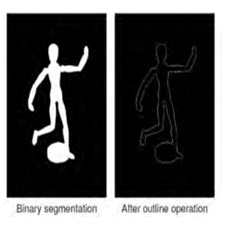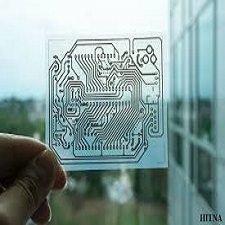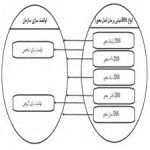توضیحات
چکیده
بازشناسی رفتار انسان یکی از زمینه های تحقیقاتی بسیار با اهمیت در خوزه بینایی ماشین می باشد که کاربردهای وسیعی از جمله تکامل انسان – رایانه، نظارت هوشمند ویدیو، کمک رسان به زندگی سالمندان، رانندگی هوشمند، سرگرمی و سیستم های انتقال هوشمند را شامل می شود. هستند شناسایی رفتار انسان به صورت تک دید ، مطالعات تحقیقاتی قابل ملاحظه ای را در سه دهه اخیر کسب کرده است اما به صورت چند دید ،هنوز این زمینه کمتر بهره برداری شده در حوزه بازشناسی رفتار می باشد. تاریخچه سه بعدی حرکت MHVs روش جامع بازشناسی رفتار به صورت چند دید را فراهم می کند که به عنوان نمایش سه بعدی بدن انسان استفاده می شود. در این مقاله یک روش جدید شناسایی سه بعدی حرکت بر مبنای توابع مورفولوژی و وزن دهی به وکسل ها در نمایش رفتار ارایه شده است. توابع مورفولوژی برای استخراج وکسل های مهم از MHV ها پدر نمایش و توصیف شیء بدن انسان مفید است استفاده شده است. سپس رویکردی برای تخصیص وزن هایی خاص به این وکسل ها در نظر گرفته شده است. این منجر به افزایش تاثیر این وکسل ها در مرحله بازشناسی رفتار می شود. همچنین جهت نمایش مستقل از دین رفتار، تبدیل فوریه سه بعدی به MHV های وزن دهی شده بر مبنای توابع مورفولوژی اعمال شده است. در نهایت پس از عملیات کاهش بعد PCA و LDA از برخی روش های نزدیک ترین همسایگی به عنوان دسته بندی رفتار استفاده شد. نتایج تحقیقات از سوی بانک داده در دسترس عموم به نام IXMAS البته ارزیابی روش پیشنهادی، نرخ 94/85 را به همراه داشته است که این نتایج شبیه سازی نسبت تحقیقات مشابه کارایی روش پیشنهادی را نشان می دهند.
ABSTRACT
Recognizing Human Behavior is one of the most important research fields in the vision of the machine, which encompasses a wide range of applications including human-computer evolution, intelligent video surveillance, life support for the elderly, smart driving, entertainment and intelligent transmission systems. . Identifying human behavior in a single vision has gained significant research studies in the last three decades, but in several ways, this field is still less exploited in the field of behavioral recognition. The three-dimensional history of motion MHVs provide a comprehensive approach to multi-view behavior recognition, which is used as a 3D view of the human body. In this paper, a new method of three-dimensional motion detection based on morphological functions and weighing the voxels in the behavior representation is presented. Morphological functions are used to extract important voxels from MHVs, the father of displaying and describing useful human body objects. Then the approach to assigning specific weights to these voxels is considered. This leads to an increase in the effect of these voxels in the recognition stage of behavior. Also, for the independent representation of the behavior of religion, the Fourier transform is applied to weighted MHVs based on morphological functions. Eventually, after the PCA and LDA diminution operations, some of the closest neighborhood approaches were used as a behavior classification. The results of the research from the publicly available data bank IXMAS, of course, have evaluated the proposed method at a rate of 94/85, which results in simulating a similar research ratio as the performance of the proposed method.
Year: 2017
Publisher : Second International Conference on Electrical Engineering, Computer Science and Information Technology
By : Maryam Hajipour, Abolfazl Lakdashty, Sajjad Tavasoli
File Information: Persian Language/ 16 Page / size: 752 KB
Only site members can download free of charge after registering and adding to the cart
سال : 1395
ناشر : دومین همایش بین المللی مهندسی برق،علوم کامپیوتر و فناوری اطلاعات
کاری از : مریم حاجی پور ،ابوالفضل لاکدشتی ،سجاد توسلی
اطلاعات فایل : زبان فارسی / 16 صفحه / حجم : KB 752









نقد و بررسیها
هنوز بررسیای ثبت نشده است.